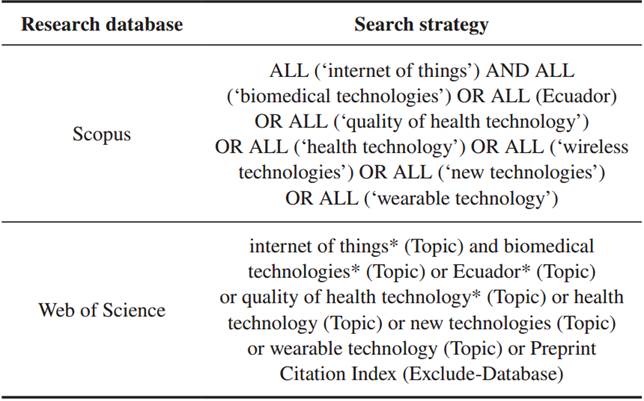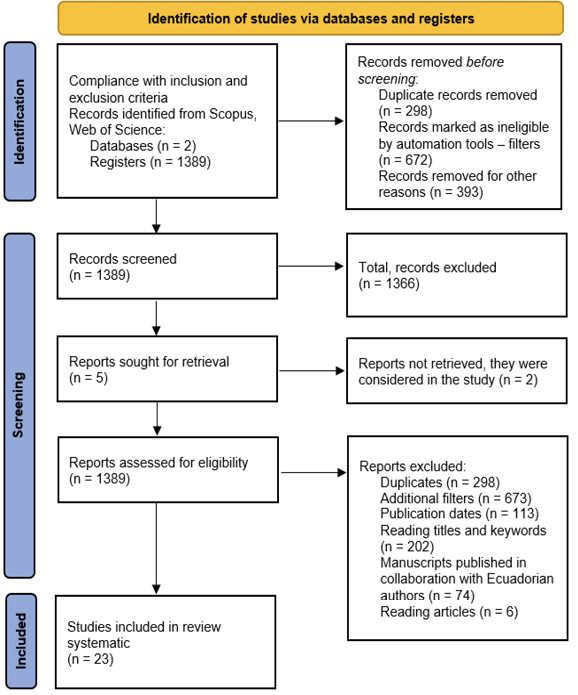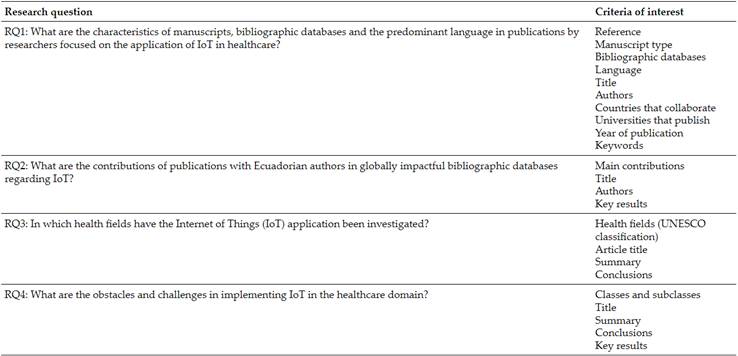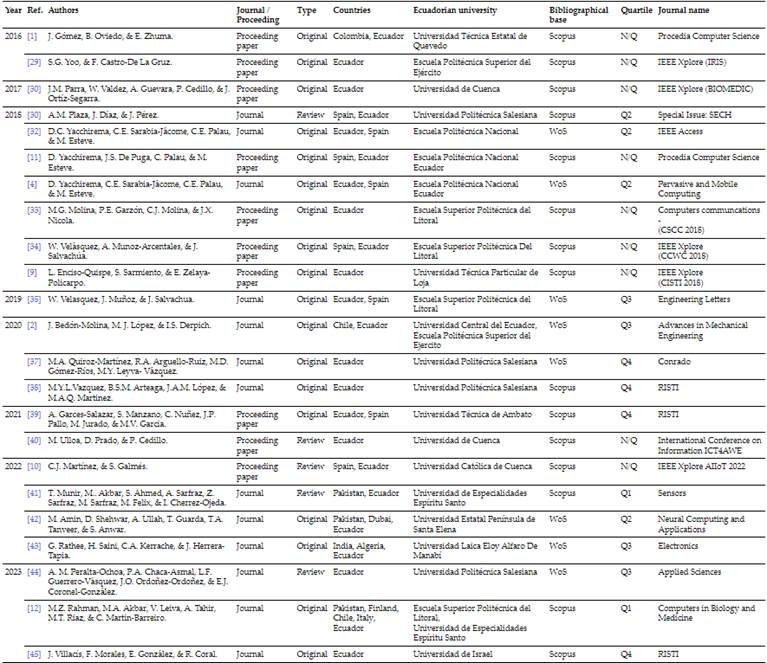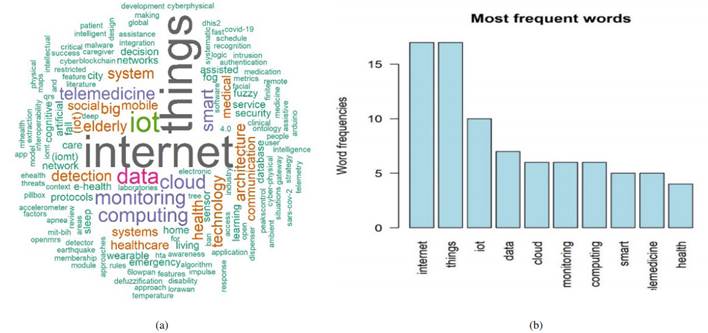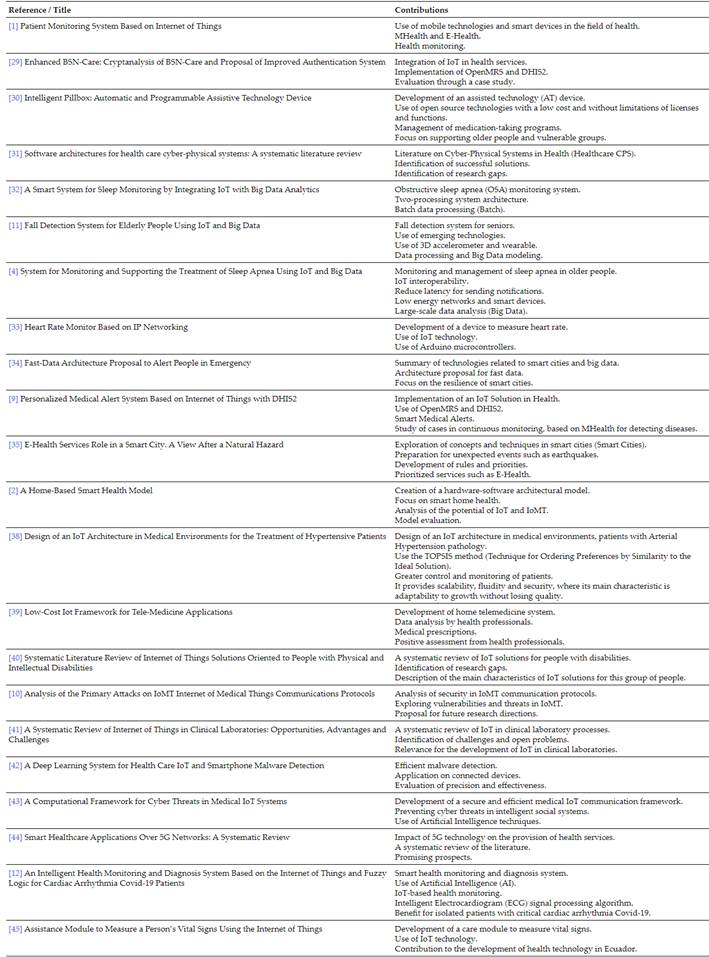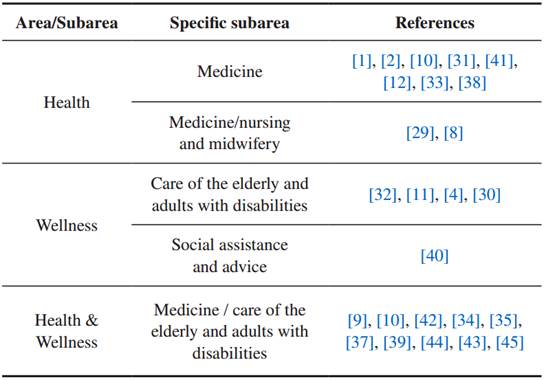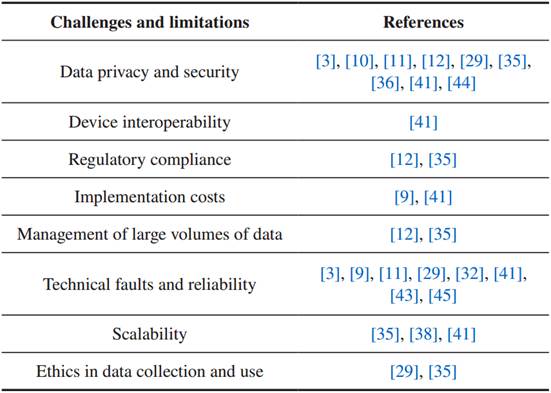I. INTRODUCTION
THE digital revolution has transformed all aspects of everyday life and industries worldwide. One of the fields that has experienced a significant impact and has been propelled to a higher position in society is the healthcare sector(1),(2). The convergence of Information and Communication Technologies (ICT), connectivity, and smart devices have aided in this field to improve healthcare, diagnosis, patient monitoring, and overall quality of life, especially for vulnerable populations(3),(5).
One of the emerging technologies, such as the Internet of Things (IoT), considered a part of the future internet and envisioned to comprise billions of intelligently connected ‘things’(6)has transformed healthcare, giving rise to what is known as the Internet of Medical Things (IoMT). This has paved the way for different healthcare delivery models, such as telemedicine, seen as an evolution of providing healthcare services remotely through telecommunications(7),(8), benefiting patients in rural or remote regions where healthcare is insufficient.
Furthermore, with interconnected medical devices healthcare professionals can diagnose, monitor and provide healthcare effectively(9),(10). Smartwatches and activity trackers, among the most common, track health metrics such as heart rate, activity level and sleep quality(11), benefiting patients with chronic diseases by providing early alerts in case of emergencies(12). Thus, the future of healthcare is shaped by increased connectivity. Just in Latin America, the interconnection of IoMT devices is projected to increase from 2 billion in 2019 to 9 billion in 2025(13).
However, amidst the numerous opportunities IoT presents in healthcare, it also encounters significant challenges. One of the main challenges is the privacy and security of health data. Data protection is essential to build trust with patients (10). Another challenge, as noted by Yacchirema et al.(14), is the interoperability between IoT devices and systems, considering that the lack of common standards has hindered effective communication among devices and systems(15).
The problem within this entire context is that there needs to be a clearer under-standing of the current state of IoT research in Ecuador’s healthcare field. This lack of awareness can hinder the development of public policies and decision-making in this area. Additionally, it may limit healthcare professional’s access to the latest research and technologies and their connection with the specific healthcare field under investigation. The hypothesis is that IoT research in the healthcare field in Ecuador is growing rapidly, but faces significant challenges. For example, patient information privacy and medical device interoperability being among the most crucial.
To test this hypothesis, the research objective is to conduct a systematic literature review analyzing contributions from publications with Ecuadorian authors in globally impactful bibliographic databases. This aims to provide an overview of the current state of IoT research in the healthcare field in Ecuador, including trends, challenges, and opportunities that can guide and foster future developments in the Ecuadorian context.
II. MATERIALS AND METHODS
This study employed a systematic review, as proposed by Arksey & O’Malley (16), using the PRISMA statement. The study adopts a mixed and inferential approach. For data analysis were utilized R Core Team software (17) and the bibliographic manager Zotero (18).
A. Phase 1: Identification of the research question
In the context of technological evolution and the demand for IoT in the biomedical and healthcare domains, and for the scope of the systematic review, were identified four research questions using the Population, Intervention, Comparison, and Out-comes (PICO) approach.
RQ1: What are the characteristics of manuscripts, bibliographic databases, and the predominant language in publications by researchers focused on the application of IoT in healthcare?
RQ2: What are the contributions of publications with Ecuadorian authors in globally impactful bibliographic databases regarding IoT?
RQ3: In which health fields have the Internet of Things (IoT) application been investigated?
RQ4: What are the obstacles and challenges in implementing IoT in the healthcare domain?.
B. Phase 2: Establishment of inclusion and exclusion criteria
Several inclusion criteria have been considered for this study. The timeframe will be from the year 2016 to August 2023, with publications in high-impact bibliographic databases written with the collaboration of Ecuadorian authors. This includes articles related to applications, solutions, smart devices, and wearables. Additionally, publications in spanish and english will be included, categorized as conference outcomes, original works, reviews, and systematic reviews.
Regarding exclusion criteria, duplicate publications and those categorized as books will be discarded.
B.1. Description of information sources
Bibliographic databases have a global scope, are multilingual and have a high scientific impact. According to Abad-García et al. (19) and Vuotto et al. (20), these databases include Scopus and Web of Science (WoS). Additionally, LILACS, PubMed, and EMBASE were considered to expand the number of manuscripts. However, no publications related to the topic were found.
B.2. Selecting keywords and search terms
The terms were defined using Health Science Descriptors (DeCS) / Medical Subject Headings (MeSH) and technology-related keywords. These strings have been designed to align with the research questions and encompass information related to ‘IoT’, ‘IoMT’, ‘Big Data’, ‘Biomedical Technologies’, ‘Healthcare’, ‘Ecuador’, ‘Quality of Technology in Health’, ‘Health Technology’, ‘Wireless Technologies’, ‘New Technologies’, and ‘Wearable Technology’.
B.3. Developing a search strategy
The search terms were combined using boolean operators ‘AND’ and ‘OR’ as a database search strategy to compile a set of manuscripts that met the inclusion and exclusion criteria and addressed the research questions. Additionally, the specific search requirements of each bibliographic database were considered.
The search was conducted in both spanish and english across all platforms of the bibliographic databases to ensure the inclusion of relevant studies, guaranteeing a comprehensive review of the available literature.
Initially, the publication period was set as 2020, based on Sadoughi et al. study(21), suggesting that around 40 % of all IoT devices in medicine and healthcare would be involved by 2020. However, due to a limited number of contributions from Ecuadorian authors, the period was expanded to include studies from 2016.
Table 1presents a breakdown of some of the search strings used during the search.
C. Phase 3: Review and selection of studies
The literature search was limited to Scopus and Web of Science. Additional, were applied filters to restrict results to articles aligned with the study objective and inclusion/exclusion criteria.
The search results are presented inFigure 1. The literature search identified a representative sample of relevant literature. These results will be used in subsequent study phases for comparative analysis of the findings.
D. Phase 4: Data extraction
With all the data was created a database in which were recorded the bibliographic database name, publication title in spanish and english, journal name, publication type, year of publication, objective, keywords, author affiliations, and participating countries. Additionally, the database included the abstract, methodology used, key results, publication characteristics, leading countries and focus.
It was ensured that the data were complete in the database, avoiding errors in data transcription. This process was carried out in collaboration with the research team. Using these variables or criteria of interest was identified how to address each research question. The details are shown in Table 2.
After completing the data extraction process, were identified a total of 23 articles authored of Ecuadorian researchers. These articles were selected from the 111 globally identified publications addressing IoT in healthcare. Despite the relatively small number of articles written by Ecuadorian authors in high-impact journals, this quantity is representative and relevant for addressing the research questions.
E. Phase 5: Analysis and reporting of results
The data processing was conducted using qualitative research techniques such as group discussion, observation, and thematic analysis (22), (23). The data were also quantitatively analyzed, through a correlational analysis of keywords and international collaboration.
III. RESULTS AND DISCUSSION
The results will be presented per research question, aiming to provide organization to the publication and address the study’s objective and methodology.
RQ1: What are the characteristics of manuscripts, bibliographic databases and the predominant language in publications by researchers focused on the application of IoT in healthcare?
According to the bibliographic database, Scopus represents 65.21 % (n=15) of the manuscripts and WoS 34.78 % (n=8). Of the 23 identified manuscripts, 21.73 % (n=5) are literature reviews or theoretical studies, and 78.26% (n=18) are original articles. Regarding the source, 39.13 % (n=9) are conference papers, and 60.86 % (n=14) are journal articles. Journal articles are frequent in 2020, 2022 and 2023, while conference articles are notable in 2016, 2017, 2018 and 2021. The year with the highest number of articles published was 2018, with seven manuscripts, followed by 2020 and 2022, with four publications each one.
The 23 articles were written by 92 authors from various countries, 53.26 % (n=49) of which were Ecuadorian. Considering the Covid-19 pandemic as a turning point in the study period, between 2016 and 2018, 10 publications were made with the participation of 58.82 % Ecuadorian authors. After the pandemic, between 2019 and 2023, this number increased to 13 publications, and the participation of Ecuadorian authors was 50 %.
Martínez & Galmés(10)mention a peak of 11 articles in one year related to the topic of information security in IoMT. Furthermore, González-Zamar(24)argues that IoT is an emerging research area in Latin America, with a somewhat modest increase in the publication of scientific articles in recent years. However, is mention a rapid evolution of these technologies, giving rise to a prolific scientific literature in the rest of the world(25). It is claimed that after 20 years of research, this has been expanded to include smart healthcare(26)and healthcare(27)content.
Furthermore, Herrera-Franco et al.(28)mentions that in the period 2011-2020 the field of engineering was increased in publications by Ecuadorian authors, mainly conference articles at 58 % and magazine articles at 37 %.
The journals cover computer science and communications, engineering, mechanics and health, including Neural Computing and Applications and Computers in Biology and Medicine. The 86.95 % (n=20) of the manuscripts were published in english, suggesting an orientation towards the international audience(24)and active participation in the global conversation on IoT and health. The 13.04 % (n=3) were in spanish, emphasizing the importance of making research accessible to the local audience and promoting communication at the national level. Herrera-Franco et al.(28)found a similar result in relation to the languages in which research is published in Ecuador.
Of the articles mentioned, 39.13 % are authored exclusively by Ecuadorian writers, while 34.78 % involve collaboration with Spanish authors. Furthermore, with a correlation coefficient of 0.22, Ecuador demonstrates a significant relationship with Spain regarding international collaboration. The remaining articles include contributions from authors from Pakistan, Chile, Dubai, Algeria, India, Finland and Italy, all exhibiting null correlation coefficients. According to Herrera-Franco(28), Spain is the leading scientific collaborator of Ecuador, and these publications involve international solid collaboration, being indexed in high-impact bibliographic databases such as Scopus and resulting in a significant contribution to the country and to the academic world.
As for the author’s affiliations, various Ecuadorian universities are represented, most notably the Universidad Politécnica Nacional and the Universidad Politécnica del Litoral. According to Herrera-Franco et al.(28)these universities are mentioned among the institutions with the most significant scientific production in the country. InTable 3is presented detailed information about the characteristics of the manuscripts. Note that in the quartiles field, those articles without quartiles are denoted withN/Q.
In the keyword analysis, it was observed that 100 % (n=23) of the publications included keywords, with a total of 145 overall. The ten most mentioned terms among the keywords were shown in Figure 2.
Was found a high correlation between the most mentioned term, ‘internet’, and the terms ‘things’ (1.00) and ‘medical’ (0.72), indicating they are related. Similarly, significant correlations were found between ‘internet’ and the terms ‘iomt’ and ‘protocols’ (0.57). Other terms showing consistent correlations in the range of 0.40 were ‘iot’, ‘communication’, ‘electronic’, ‘industry’, and ‘integration’. Additionally, in the study conducted by Herrera-Franco et al.(28), keywords related to cloud computing, information systems and digital technologies, which were decisive for developing or producing the Internet of Things (IoT).
The identified keywords in the publications provide information about the most relevant topics at the intersection of IoT and healthcare. The high correlation between terms such as ‘internet’, ‘things’, and ‘medical’ indicates a centrality of these concepts in the selected literature. Furthermore, the presence of terms like ‘iomt’ and ‘protocols’ suggests a specific focus on integrating medical technologies and communication protocols, as well as the importance that some authors emphasize regarding challenges related to data privacy and interoperability standards(10).
RQ2: What are the contributions of publications with Ecuadorian authors in globally impactful bibliographic databases regarding IoT?
Among the contributions are implementing real-time patient monitoring systems, designing IoT-based medical devices for patients with chronic and geriatric conditions, as well as developing innovative solutions for telemedicine and patient care in remote areas.
As for the contributions of Ecuadorian authors in the global field of IoT in health, the research covers various areas. In the ‘real-time health monitoring and medical device design’ category, contributions integrating IoT into healthcare services have been identified, such as the obstructive sleep apnea (OSA) monitoring system(4)and fall detection for the elderly(11). These contributions are developed in the specific fields of medicine and nursing. Zeadally’s study(46)also emphasizes the importance of a patient monitoring application for transmitting blood pressure readings and detecting health issues.
In ‘specific IoT technologies’ contributions incorporate advancements such as 3D accelerometers and wearables for real-time monitoring(11). IoT interoperability facilitates the integration of devices in a connected environment, while low-power net-works focus on sustainable efficiency(4). The development of devices, like heart rate monitors with Arduino microcontrollers, highlights the practical applicability of IoT in healthcare(33). The home-based approach is reflected in telemedicine systems and care modules, promoting remote healthcare and health monitoring(39). These innovative applications enhance the quality of life and the comprehensive management of healthcare services(47).
In this same field of medicine and nursing, contributions have been made to data analysis and efficient healthcare management(1),(29). For instance, in Herrera-Franco et al.(28), under the management category it has led to the generation of studies related to big data, which is becoming an increasingly challenging area. Other studies have addressed specific areas of health, such as epidemiology and cardiology, highlighting the diversity of approaches and solutions proposed in specialized healthcare fields(12),(33).
Another contribution lies in telemedicine and remote patient care, emphasizing the importance of remote connectivity and efficiency in medical communication, such as developing a home telemedicine system with a positive assessment by healthcare professionals(39). This potential of IoT is applied in the specific field of social assistance and counseling(36),(40). According to Banerjee et al.(47)and Herrera-Franco et al.(28), there is a discussion about the advancement of this technology designed specifically for this purpose. Additionally, computational sciences have strengthened the field of telemedicine.
Table 4presents the information detailing the contributions from the 23 articles.
RQ3: In which health fields have the Internet of Things (IoT) application been investigated?
Have been found proposals, models and systems, starting in internal medicine and gerontology(32)and moving on to medical services and clinical laboratories(41). Other publications have presented prototypes and experimental proposals(11), while others have conducted comprehensive reviews and original studies in fields such as epidemiology, cardiology and nursing(12),(33).
Although several of the works do not explicitly address the area and sub-area of knowledge in which they apply IoT, the diversity of approaches and proposed solutions highlight the application of this technology in the broad field of Health and Wellness.Table 5shows the UNESCO sub-area of knowledge in which each publication falls, considering that the knowledge area is Health and Wellness. Note that some references are cited in several areas.
The devices for assistance and technology for vulnerable groups demonstrate concern for developing assistive technology devices and managing medication-taking programs for these population groups(30). These efforts highlight the practical application of IoT to improve the quality of life. In this regard, the field of elderly care and adults with disabilities has been taken into account for the development of approaches and models that will enhance healthcare and public health services(3),(4),(10),(42),(44). Even in Banerjee et al.(47)and Zeadally et al.(46)is mentioned that these devices collect data to be analyzed through artificial intelligence for possible predictions of health-related issues, contributing to the evolution towards intelligent health where are used conventional mobile devices in conjunction with portable medical devices.
RQ4: What are the obstacles and challenges in implementing IoT in the healthcare domain?
Implementing the Internet of Things (IoT) in the health field faces various obstacles and challenges that require attention. It is important to note that, since the publications are contributions from Ecuadorian authors, they do not necessarily focus on specific challenges and limitations of Ecuador, but address general aspects in this field. Also, it is essential to note that not all articles in their full publications explicitly mention these challenges or limitations. The details are shown inTable 6where is noteworthy that certain manuscripts delineate various challenges.
Regarding the challenges in implementing IoT-based health systems, most of them generally mention that privacy and data security emerge as crucial challenges. They focus on protecting the confidential patient information and highlight limitations in the security protocols, emphasizing the need for robust approaches to safeguard information(3),(10),(11),(12),(29),(35),(36),(41),(44). Additionally, Banerjee et al.(47)and Wang et al.(26)emphasize the issue of data privacy as a top challenge, demonstrating that critical studies in this field prim arily concentrate on IoT security, wireless sensor networks, IoT management, IoT challenges and privacy.
Another challenge is the interoperability of medical devices, emphasizing the need for standardization to facilitate effective communication between systems(41). According to Hendriks(15), open standards can enhance interoperability. However, which strategies should be implemented to create standards that enable a certain degree of functional openness still needs to be better understood.
Compliance with regulations, particularly with acts like the Health Insurance Portability and Accountability Act (HIPAA), adds complexity to the implementation. This challenge underscores the importance of aligning solutions with established standards and regulations to ensure legality and ethics(12),(35). In Kante & Ndayizigamiye(48), Senegal is mentioned as the only country with regulations addressing this issue. Their analysis of Medical Internet of Things (IoMT) policies suggests that academics should provide more evidence on IoMT so that policymakers can act accordingly to enhance healthcare.
Managing large volumes of data is another challenge, emphasizing the importance of efficient solutions for data collection, storage, and analysis using artificial intelligence techniques(12),(35). Reliability and technical failures are also highlighted, underscoring the need for robust and dependable systems to ensure consistent and secure performance in critical healthcare environments(3),(9),(11),(29),(32),(41),(43),(45).
Regarding scalability, technical failures and reliability are challenges that require solutions to ensure the adaptability and reliability of systems for their continuous growth and to meet the changing demands of the healthcare system(35),(38),(41). Ethical considerations in data collection and use are also highlighted as critical challenges(29),(35). These aspects underscore the complexity faced in effectively integrating IoT in the healthcare domain.
IV. CONCLUSION
In recent years, there has been an increase in the publication of scientific articles by Ecuadorian authors in the field of IoT applied to health, especially in collaboration with Spain. Furthermore, the active participation of authors affiliated with Ecuadorian universities indicates a prominent role of the academic community in this area. Areas of contribution were identified, including real-time health monitoring, medical devices, security and vulnerabilities, data management and big data and medical applications. These categories cover the contributions of publications in bibliographic databases of global impact.
Future research should address the identified challenges, particularly protecting patient data privacy and security. It is essential to establish standards to ensure the interoperability of medical devices and develop mechanisms to comply with regulations through ethical policies and regulations on data use.
In addition, regional bibliographic databases such as Scielo and Latindex should be considered to verify and expand the status of publications on the topic and obtain a complete view of the scientific literature by Ecuadorian authors. While this systematic review provides an overview, some limitations were identified, such as the number of manuscripts included. The final number of articles may have been affected by the availability of specific studies in high-impact bibliographic databases, also, during the comprehensive review were excluded many titles that did not meet the inclusion criteria.
APPENDIX
A. Author contributions
For research articles with several authors must be provided a short paragraph specifying their individual contributions. C.V.O refers to Cristina Vaca Orellana and M.V.D refers to María Valle Dávila. The following statements should be used: Conceptualization, C.V.O. and M.V.D.; methodology, C.V.O.; software, C.V.O.; validation, C.V.O., M.V.D.; formal analysis, M.V.D.; investigation, C.V.O.; resources, C.V.O.; data curation, C.V.O.; writing-original draft preparation, M.V.D.; writing-review and editing, C.V.O. and M.V.D.; visualization, M.V.D.; supervision, M.V.D.; project administration, C.V.O. and M.V.D.; funding acquisition, C.V.O. and M.V.D. All authors have read and agreed to the published version of the manuscript.














